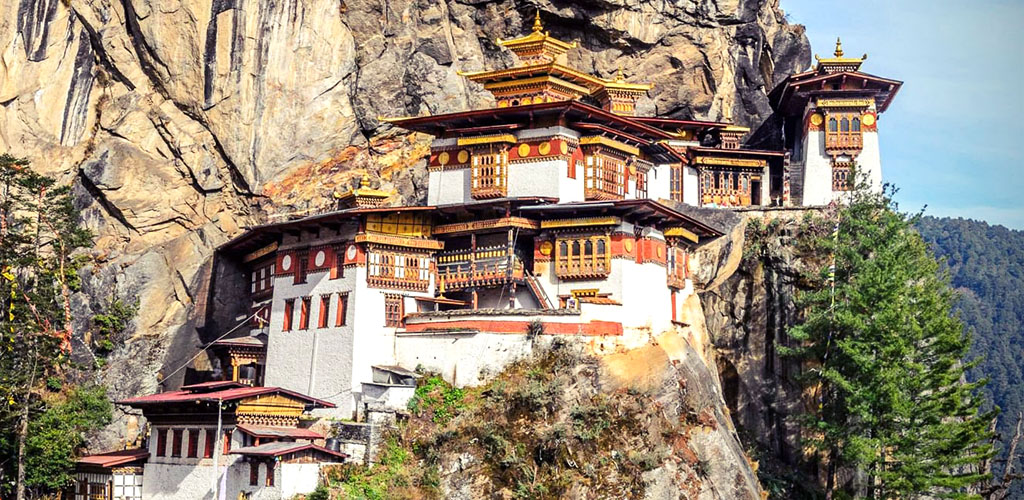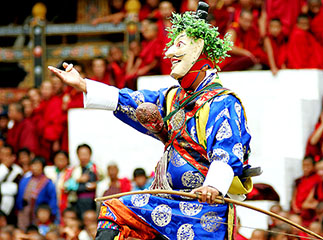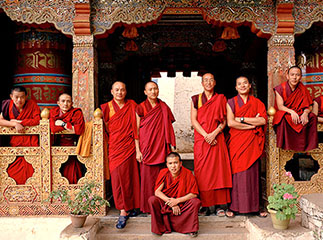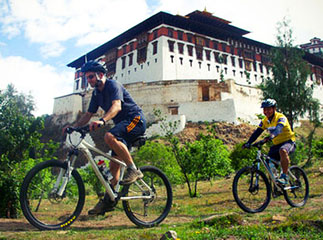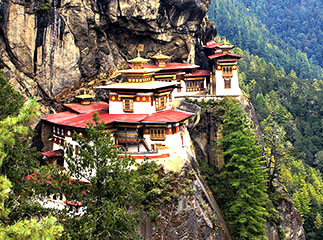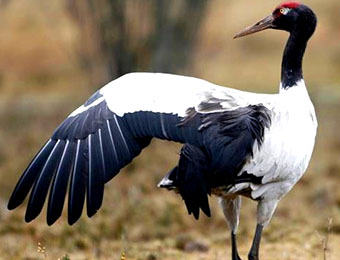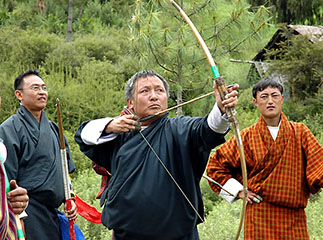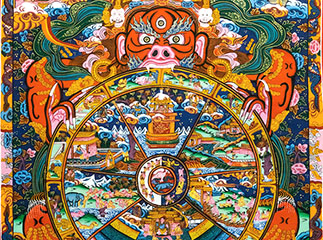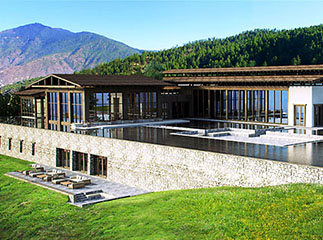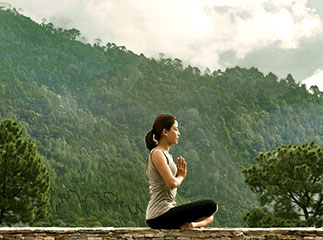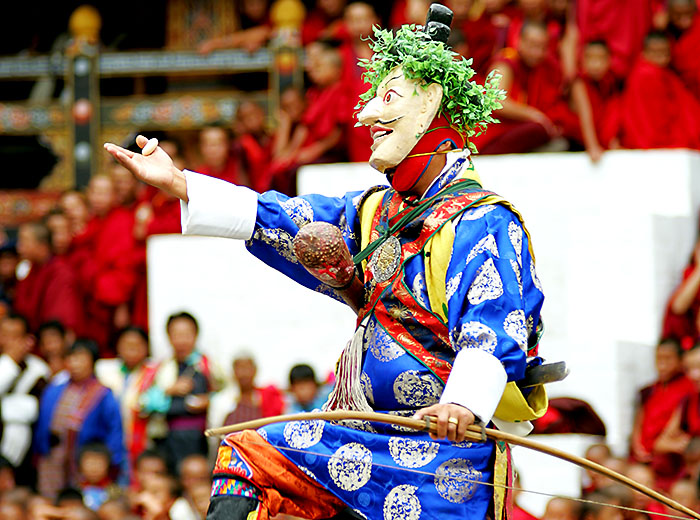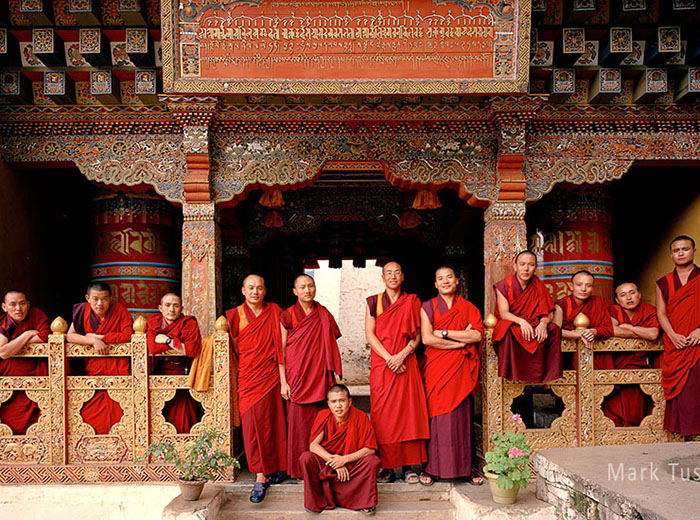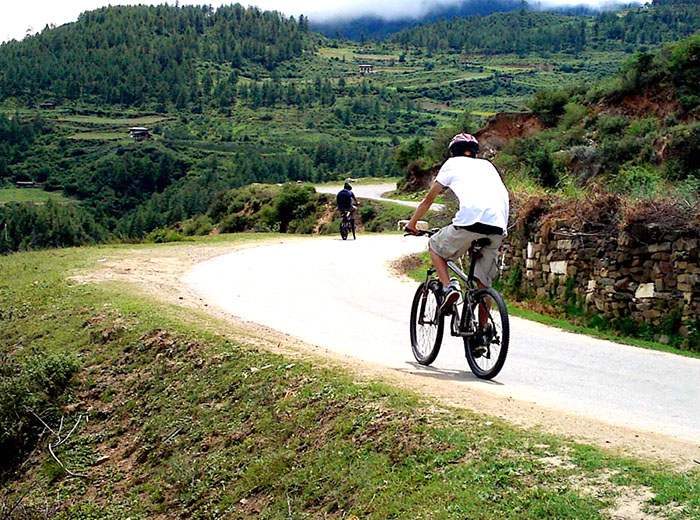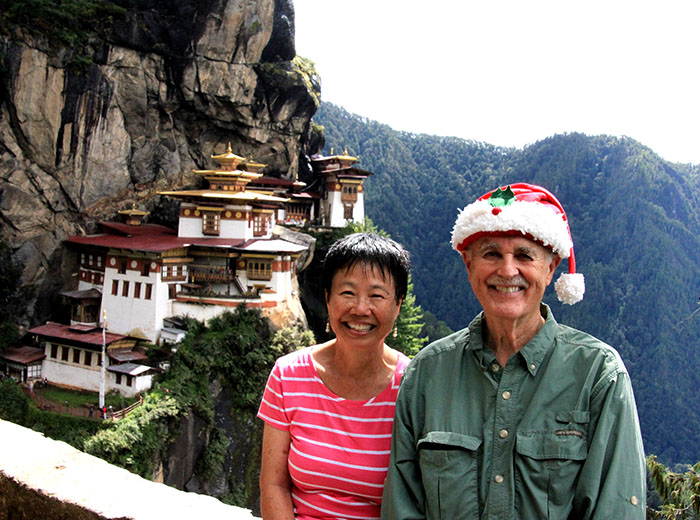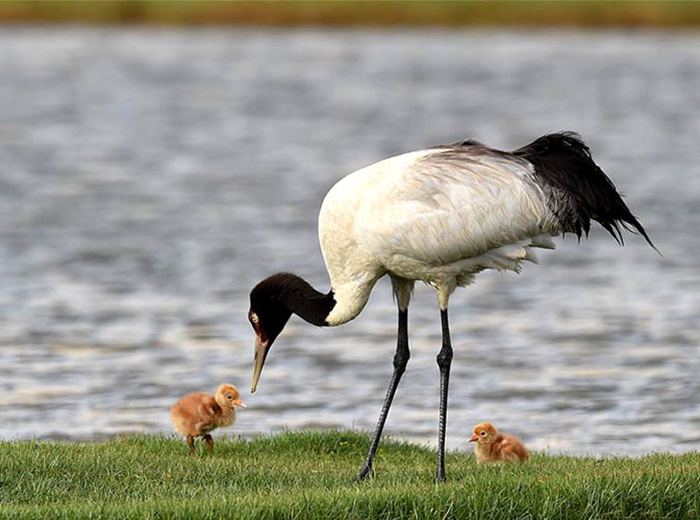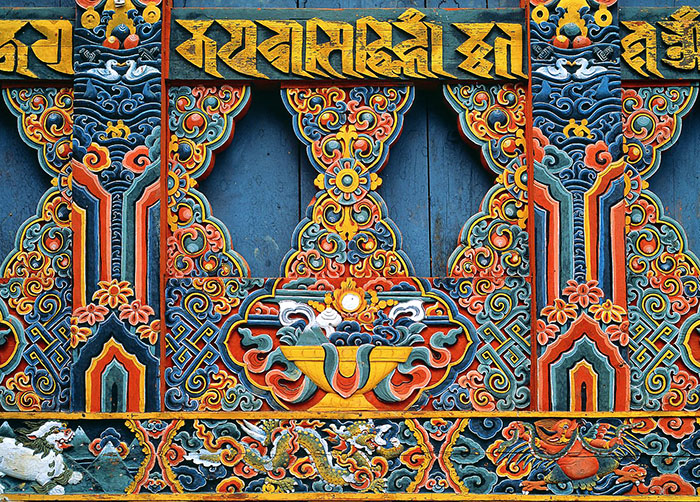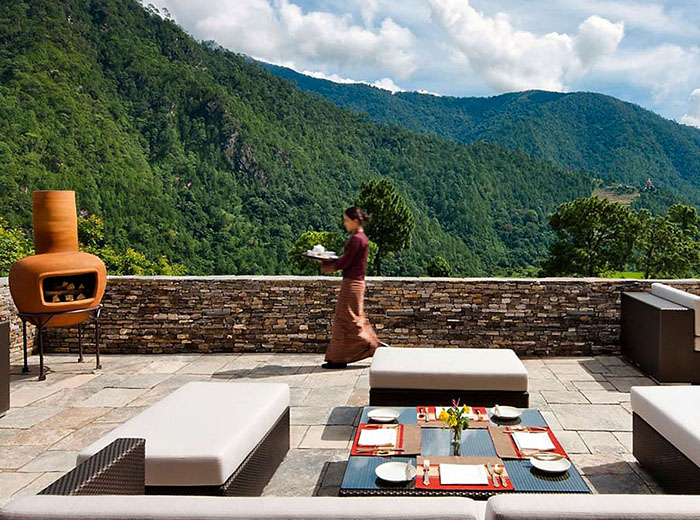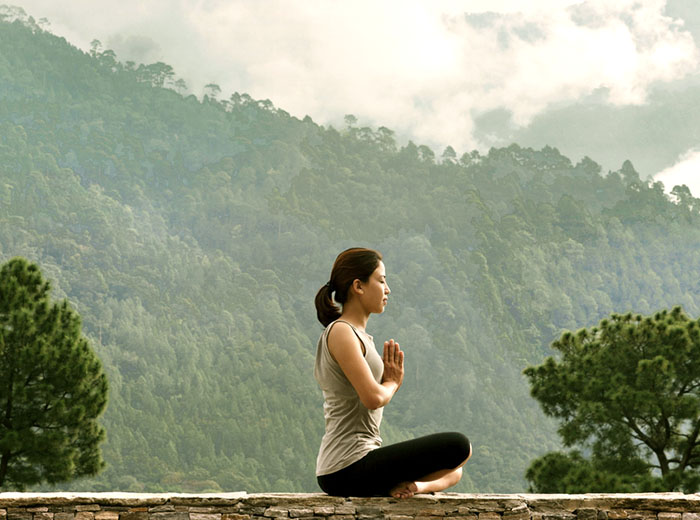Bhutan Art Encounter
Beyong Buddhism, at its heart, Bhutan is a arts and crafts and culture. The thirteen traditional art & crafts of Bhutan impart a major role in the cultural heritage of the country. The Zorig Chusum of Bhutan have been in practice since time immemorial. The categorization of these arts & crafts were made during the rule of the fourth temporal ruler of Bhutan, Gyalse Tenzin Rabgay.
THAG-ZO
The Bhutanese life and culture is highly influenced by the textile industry, hence the art of weaving is a major occupation. Ladies of Eastern Bhutan are praised for their expertise in weaving some of the highly priced textiles. Previously, textiles were used to pay government taxes in lieu of cash. Locals from west of Bhutan travel to Samdrup Jongkhar to barter pricey woven textiles. Moreover, these textiles are woven using raw cotton, silk and intricate motifs.
Some of the popular textiles and their village are:
- Kushithara from Khoma village in Lhuentse
- Bura textiles such as Mentsi Matha and Aikapur from Rahi and Bidung
- Dungsam Kamtham (cotton fabric) from Pemagatshel
- Adang Rachu, Adang Khamar and Adang Mathra from Decheling Adang village in Wangdue Phodrang
- Yathra and Bumthap Mathra (both woven from sheep wool and yak hair) from Bumthaps in Central Bhutan
People of Korphu and Nabji in Trongsa also specialize in making nettle fiber textiles. The Brokpas of Merak and Sakteng also take weaving as a career. The spinning of sheep wool and yak hair into thread is contributed by men of Bhutan. Bhutanese weavers use 4 types of looms, namely blackstrap loom, card loom, horizontal-framed loom and horizontal fixed loom.
TSHA-ZO
The forest area of Bhutan is predominantly covered by various species of bamboos and canes. Using the available resource, the locals have gained expertise in weaving bamboo and cane products. This art is known as Tshar Zo, and is popular in every nook and corner of the country. Winnowers, baskets, containers called bangchungs and palangs, mats and many more are widely demanded in the markets. The Bjokaps of Central Bhutan and locals of Kangpara in Eastern Bhutan are best known for this art and craft. These articles attract tourists and thus, resulting in an additional income and helping in keeping the demand of the craft high in the markets.
SHAG-ZO
Shag-Zo is the art of wood turning and is conventionally practiced in Eastern Bhutan by the locals of Trashiyangtse. The skilled craftsmen are popularly known as Shag Zopa. They specialize in making the wooden bowls and cups, which traditionally are termed as phobs and dapas. Special wood knots, Zaa, are used in the making these bowls. Prior to the introduction of metals like brass and steel, these bowls were extensively used by the Bhutanese. Presently, these are sold are typical artifacts. Visitors buy these items as souvenirs. The locals of Khengkhar, a small village in eastern Bhutan, are best known for their specialization in making Jandup, the traditional wooden wine containers.
LHA-ZO
Lha-Zo are the Bhutanese Paintings, which contribute to the traditional arts and crafts of the country. This is one of the ancient art forms that involve paintings of the imagery landscapes of Bhutan. Lha Rips is the term used for the master painters. Their creativeness could be seen in every architectural piece ranging from the glorious temples to the massive Dzongs and spiritual monasteries. One can also find a few masterpieces in modest Bhutanese homes. The distinctive paintings and use of various colors represent the art & craft of Bhutan. A few of the examples, where one can find original paintings are thongdrols or thangkas. To add color to the painting, natural pigmented soils are used. These different colored soils, found throughout the country, are named accordingly, for example, the black lumps of soil is called ‘sa na’, red lumps as ‘Tsag sa’, and so on.
SHING-ZO
In the construction industry of Bhutan, the Shing Zo (wood work) plays a vital role. The master carpenters are known as Zo-Chen and Zowo. The masterpieces could be seen throughout the country in palaces, temples, bridges, and houses. The dzongs are also praised for their uniqueness and fine specimens of the woodwork. The master carpenters (the chief architects) undertake the work right from the designing to measuring, carving and completing the work. Timber is the raw material used in the making of structures for doors, windows, stairs, columns, balconies, beams, elaborate decorative cornices and different structural elements. Therefore, the architectural brilliance of Bhutan is praised for its elegance, beauty, and unique character. On the other hand, these structures are highly vulnerable to degeneration and fire. In the list of great craftsmen, Trulpai Zowo Balep is revered for his architectural skill in the construction of Punakha Dzong (1637).
DO-ZO
The ancient craft of masonry is known as Do Zo. It is also regarded as a trade, which is practiced till date. The temples, Chortens (stupas), Dzongs and farm houses, throughout the country are built using stone. Chendebji Chorten in Central Bhutan and Chorten Kora in Tashiyangtse in Eastern Bhutan, are a few of the finest specimen of Do Zo. The locals of Rinchengang Village in Wangdue Phodrang Dzongkhag are best known for their expertise in making the best of the stone works in Bhutan.
PAR-ZO
Par Zo in another traditional art of Bhutan, honed over periods of time. The carvings are done on wood, slate and stone. The unique designs and ark work represents the distinctive character of the Land of the Thunder Dragon. One can witness the skillful carvings in various celebrations such as Tsechus (annual religious festival). Traditional engraved motifs are found on Dzongs and the traditional Bhutanese houses. Phalluses are a unique wood carving that attracts visitors. These wood carvings are hung on the corners of the houses in varied shapes and sizes. During religious festivals, the Acharyas (the clowns) wield these carved wooden phalluses, signifying to bless spectators and discard their misfortunes and evils.
Do Nag Lopens is the term used for the master craftsmen of the art of slate carving. Both the eastern and western regions of Bhutan are rich in the content of Slate. These carvings are not very diverse and are found in various religious places like Chortens (Stupas), temples and Dzongs. One can also find Slate Carvings in different mantras, religious scriptures and deific engravings. The stone carvings are not very evident in the region. Thus, one can find these carvings in huge grinding mills that are used by people residing in distant Bhutan villages.
JIM-ZO
Clay Work or Jim Zo is a traditional craft that has been passed down from one generation to the other. The origin of this art precedes the beginning of other sculpture works like bronze and similar metal works. The clay work in Bhutan is used to make the statutes of Gods, Goddesses, Deities and other significant religious figures. Jim Zo Lopens is the term used to define the master sculptors. Along with the art of sculpting clay statues, the ancient art of crafting clay pottery is also very much in practice. These potteries can be used as decorative items, souvenirs or gift articles.
On one hand, where the art of modeling statues is done by men, the pottery is specialty of women. The array of clayware includes stoneware, earthenware, and the china-clayware. But, in Bhutan, only earthenware is available. The success in crafting clay pottery is completely dependent on the composition of the clay, the skill of the crafter in clay shaping and right temperature to bake the material. Thereafter, Lac is used to coat the baked clay items and provide them endurance against water. The women of Paro and Lhuentse vigorously practice this art to keep it alive.
LUG-ZO
Lug Zo is an art that involves casting made out of bronze. In Bhutan, bronze was commonly used to make containers such as urns, cups and vases. People also used bronze to caste weapons and armors such as helmets, swords, battle-axes, shields and knives. In the 17th century, the bronze casting was introduced in Bhutan, and widespread through Newari artisans, who came visiting from Nepal. Zhabdrung Nawang Namgyal was the one who invited the Newars to cast bronze religious items like water offering bowls and bells, and bronze statues. They introduced this distinctive art and today there are a few Bhutanese who practice bronze castings.
GAR-ZO
Gar Zo is the iron art work and in the late 14th century blacksmithing began in Bhutan. Legends say that this art of iron casting was introduced by Dupthob Thangtong Gyalpo, a Tibetan Saint. He is honored by the people of Bhutan as a master engineer for his expertise in casting chains of Iron and setting them as bridges over a deep ravine. About 8 suspension bridges in the country are said to be built by him. The bridge crossing over the Paro Chu, en route from Paro to Thimphu, is one of the living specimens of such bridges. This further connects the highway to the popular Tachog Lhakhang. Visitors can also find the remains of other similar bridges in Paro at the National Museum. Gar Zo is one popular art that is on its way to extinction. But, the original Tibetan settlers in Trashigang practice iron casting till date.
DE-ZO
De Zo is another major art that plays an important role in the list of art & craft of Bhutan. Dezop is the term used to define people engaged in making the traditional Bhutanese paper. The bark of the Daphne tree is used as the raw material in the making of the traditional paper. Most of the ancient religious texts and scriptures were on Dezho and traditional Bhutanese ink was used for writing. Additionally, gold was also used occasionally to write. Though, the modern paper has dominated the markets of Bhutan, people are still engaged in the production of traditional paper. They also use Desho as carry bags, envelopes, and wrapping for gifts. This art is majorly practiced by locals of Trashiyangtse in Bhutan, where raw material is available.
TSHEM-ZO
The popular art of tailoring in Bhutan is termed as Tshem Zo. The art is broadly categorized as Lhem Drup (the art of appliqué), Tsho Lham (the art of traditional Bhutanese boot making) and Tshem Drup (the art of embroidery). Monks in Bhutan normally practice the art of appliqué and embroidery. They produce large religious scrolls (Thangkas), using this art form. Thangkas portray deities, saints, Gods and Goddesses. On the other hand, the Traditional boot making is done by Bhutanese laymen. Officials wear these boots on some special gatherings and functions. These boots are made of cloth and leather. The origin of this old craft of boot making is still unknown. In villages, even special craftsmen use uncured leather to make these traditional boots. The government support has helped in keeping this art alive and as a result, there has been a recent revival in the urban centers of kingdoms in Bhutan. These craftsmen are also specialized in sewing the traditional Bhutanese garments, Kira and Gho
